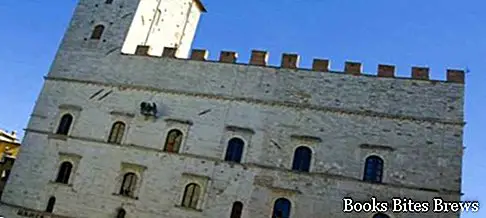What to see in Todi, itinerary including the main monuments and places of interest, including the Church of San Fortunato, Palazzo del Popolo and the Cathedral.
Tourist information
A town in the province of Perugia, Todi rises above a hill along the Tiber Valley.
Tutere, the ancient city of Umbrian-Etruscan origins, was conquered by the Romans in 89 BC, was the Augustinian town hall and colony, until it suffered the invasions of the Lombards.
The feudal system began with the victory of the Franks over the Lombards.
From this period, in the surroundings of Todi, the remains of the ancient ramparts that protected the feudal castles are visible.
In the thirteenth century it became a free municipality, until in 1367, it lost its autonomy and the government of the city passed into the hands of various lordships.
From the first half of the sixteenth century, until the end of the eighteenth century, the city was absorbed by the Papal States and remained subject to it, excluding the Napoleonic period, until its annexation into the Kingdom of Italy.
The medieval era, corresponding to the golden age of the municipality, left the dominant mark in Todi, even if the city had already developed in pre-Roman and Roman times.
Each historical period is evidenced by a circle of walls, including the most recent, the medieval one which is four kilometers long, enclosing the previous Etruscan and Roman walls.
What see
The centerpiece of the historic center is Piazza del Popolo, where the Palazzi del Popolo, dating back to before 1313, overlook the Capitano (1292) and the Priori (1339-1347), symbols of civil power, while on the opposite side of the square find the Cathedral (XI-XVI century), dedicated to Santa Maria Assunta, symbol of religious power.
Not far from Piazza del Popolo stands the Church of San Fortunato, home of the Franciscan friars minor.
Recommended readings- Umbria: Sunday day trips
- Gualdo Tadino (Umbria): what to see
- Ferentillo (Umbria): what to see
- Orvieto (Umbria): what to see
- Castiglione del Lago (Umbria): what to see
Inside are the remains of Jacopo De Benedictis known as Iacopone da Todi, one of the most illustrious characters in the city.
Jacopo was born into a noble family, studied law and practiced the notarial profession, got married, but following the tragic death of his wife he abandoned worldly life, distributed his belongings to the poor and subsequently became part of the Franciscan order.
Jacopone da Todi, author of famous religious lauds of Italian literature, is considered one of the most important Italian poets of the Middle Ages, to whom is attributed the Stabat Mater, which expresses human pain in the Weeping of Our Lady in very high poetry.
Outside the circle of the medieval walls is the church of Santa Maria della Consolazione, a building with Renaissance architecture, whose construction began in 1508 and ended a century later, most likely on a project by the great architect Bramante.




